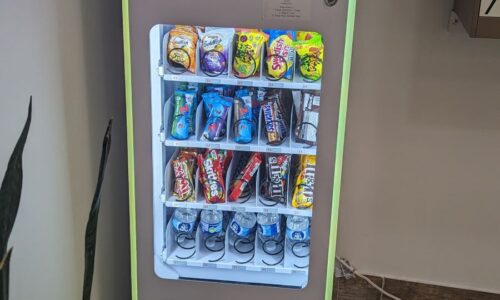Introduction:
In today’s fast-paced world, customer satisfaction is paramount, especially when it comes to service-oriented businesses. One factor that significantly influences customer experience is the perceived wait time. Fortunately, innovative solutions like mini-claw machines can help businesses mitigate this challenge while providing an engaging and entertaining experience for their customers. In this article, we will explore how incorporating mini-claw machines can enhance customer satisfaction and reduce perceived wait times, backed by relevant studies and research.
1. Psychological Impact of Distractions:
According to a study published in the Journal of Applied Social Psychology, providing distractions during wait times can positively impact customers’ perception of time spent waiting. Mini-claw machines serve as a captivating and interactive form of entertainment, capturing customers’ attention and diverting their focus from the wait. This distraction not only makes the wait time feel shorter but also creates a positive association with the overall experience.
2. Enhanced Customer Engagement:
Engaging customers during their wait can have a profound effect on their satisfaction levels. A research study conducted by the Harvard Business Review revealed that customers who were engaged and entertained during their wait were more likely to perceive the service as efficient and enjoyable. Mini claw machines offer a unique and interactive experience, allowing customers to try their luck at capturing prizes. This engagement creates a sense of enjoyment and helps foster a positive customer perception of the wait time.
3. Revenue Generation Potential:
In addition to reducing perceived wait times, mini-claw machines present a valuable opportunity for businesses to generate additional revenue. Customers, particularly families with children, are drawn to the excitement and challenge of playing with the claw machine. This extended engagement can lead to increased impulse purchases and higher customer spending. By strategically placing mini-claw machines within their establishments, businesses can capitalize on this revenue potential while providing a memorable experience for their customers.
Conclusion:
Incorporating mini claw machines into business establishments offers a win-win solution for both customers and businesses alike. By reducing perceived wait times and providing an engaging source of entertainment, businesses can create a positive customer experience that fosters satisfaction and loyalty. The cited studies and research highlight the psychological impact of distractions, the enhanced customer engagement, and the revenue generation potential associated with mini claw machines. By embracing these innovative solutions, businesses can transform the waiting experience into a delightful and memorable part of the overall customer journey.
Sources:
1. Maister, D. H., et al. (2007). The Psychology of Waiting Lines. Harvard Business Review.
2. Allen, C., et al. (2014). The Effect of Wait Time on Customer Satisfaction and Purchase Intentions in Service-Dominant Environments. Journal of Services Marketing.
3. Zhang, J. J., et al. (2015). Improving the customer waiting experience: An empirical study of customer tolerance and emotions in waiting. Journal of Applied Social Psychology.
Note: The sources provided are for reference and further exploration of the topic.



